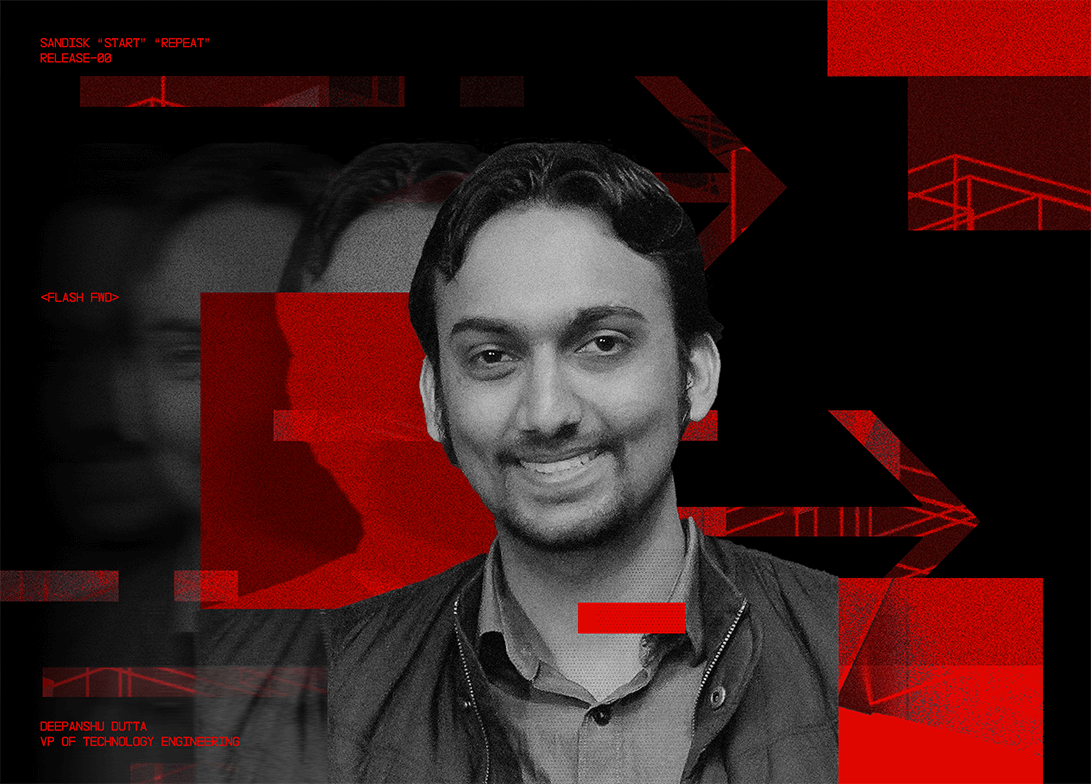Deepanshu Dutta always knew it was going to be chipsets for him, just not what kind.
“From day one, I understood that chips were the future. I didn’t really know the nuances of the semiconductor industry. I just knew that I wanted to work in Silicon Valley. I wanted to work on the future,” said Dutta, Vice President of Technology Development Engineering at Sandisk.
With a master’s in hand from UC Irvine, Dutta started his career at Sandisk in 2006, pushing the bounds of NAND technology with an irrepressible spirit for innovation. His work over the years has led to the development of more than 170 patents. Now, as a people leader and accomplished engineer, he’s poised to help guide Sandisk into a new era of excellence.
The halcyon days of NAND
The mid-2000s were golden years for 2D NAND. Between technological breakthroughs like TLC and a booming consumer electronics market, spurred by the introduction of the first iPhone, it was a time of rapid growth.
“When I got hired, we used to talk about a 50 to 60% bit consumption increase year-over-year, compounding every year in an exponential curve,” Dutta said. To meet the rising tide of demand, engineers like Dutta stepped up to the plate.
“I’d come to work every day and think about how to pack more information into the same physical space, these minuscule memory cells. That was the mission: smaller, denser, faster,” said Dutta. This is where Dutta’s innovative engine started.
“The average person who buys an SSD, they’re only focused on capacity, speed, and cost. MLC, TLC, QLC, these mean nothing to them, but they are the very reason why storage prices have come down significantly over the last 20 years,” he said.
Each generation of NAND technology presented unique challenges. The jump from MLC to TLC, and even now to QLC, requires novel solutions at a steady clip. It's not enough to fit another bit into the same memory cell and call it a day: speed, reliability, and ever-smaller form factors demand constant innovation. These are the challenges Dutta works on every day, the kind of work that energizes him.
“I love solving whiteboard problems. I love talking with my team about exciting, innovative ideas. That’s when I have the most fun at work,” he said.
